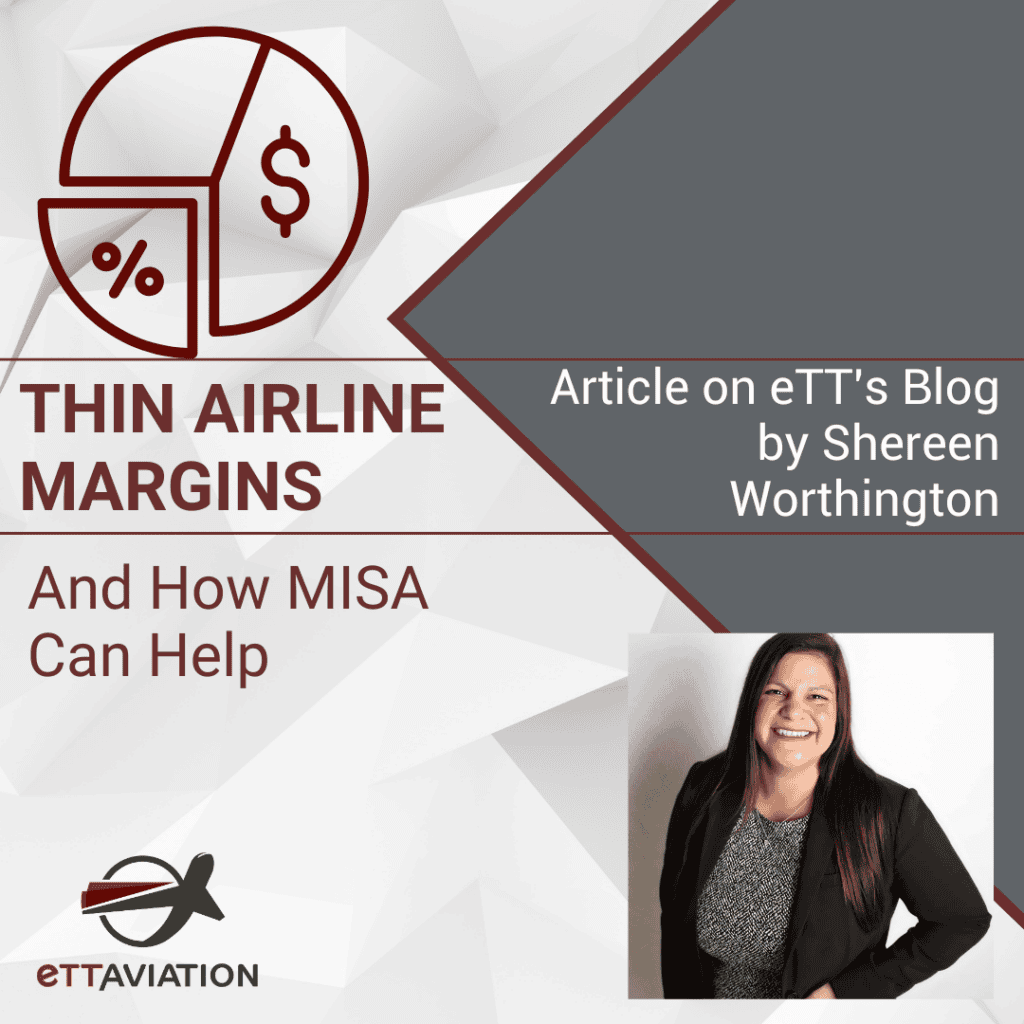By Shereen Worthington
In the fiercely competitive airline industry, margins are notoriously thin. Airlines constantly seek ways to optimize operations, reduce costs, and enhance profitability. Amidst this quest for efficiency, the human element—specifically the quality of life for pilots and crew members—often gets overlooked.
Management Information System for Aviation (MISA) offer a solution that not only boosts operational efficiency but also addresses the critical concern of work-life balance for airline staff. This article explores how MISA can help airlines navigate thin margins while significantly improving the quality of life for pilots and crew members.

The Reality of Thin Airline Margins
Operating an airline is an expensive endeavor. The costs associated with fuel, maintenance, labor, and regulatory compliance are substantial, and even minor inefficiencies can erode profit margins. Airlines operate in a highly volatile market, subject to fluctuating fuel prices, regulatory changes, and competitive pressures. In this context, every aspect of operations is scrutinized for potential savings.
According to IATA.org, net profits for the airline industry are expected to reach $30.5 billion in 2024, representing a 3.1% net profit margin. This is an improvement on 2023 net profits, estimated at $27.4 billion with a 3.0% net profit margin. It also surpasses the $25.7 billion (2.7% net profit margin) forecast for 2024 profits that IATA released in December 2023.
“Earning just $6.14 per passenger is an indication of just how thin our profits are—barely enough for a coffee in many parts of the world,” IATA director Willie Walsh told CNBC.
Operational Costs: Fuel and maintenance are among the most significant expenses. Efficient scheduling and maintenance practices can lead to substantial savings in these areas.
Labor Costs: Pilots and crew members represent a significant portion of an airline’s workforce. Efficient management of their schedules is crucial not only for cost control but also for maintaining morale and job satisfaction.
Regulatory Compliance: Airlines must adhere to strict regulatory standards, which can add to operational costs. Effective maintenance and scheduling systems can help ensure compliance while minimizing expenses.
The Role of MISA in Enhancing Efficiency
Maintenance Information Systems and Analytics (MISA) integrate data from various sources to provide actionable insights that enhance operational efficiency. By leveraging MISA, airlines can optimize maintenance schedules, improve resource allocation, and reduce unnecessary expenditures.
Predictive Maintenance: MISA uses data analytics to predict when maintenance is required, preventing costly unscheduled repairs and reducing downtime. This proactive approach extends the lifespan of aircraft components and minimizes disruptions.
Resource Optimization: Advanced MISA solutions enable airlines to allocate resources more efficiently. By optimizing maintenance schedules and inventory management, airlines can reduce waste and improve turnaround times.
Regulatory Compliance: MISA helps ensure compliance with aviation regulations by providing detailed records and tracking maintenance activities. This reduces the risk of fines and enhances safety.
Improving Work-Life Balance for Pilots and Crew Members
While MISA’s primary focus is on operational efficiency, its benefits extend to improving the quality of life for pilots and crew members. Good scheduling software is not merely a convenience; it is a necessity for maintaining a healthy work-life balance.
Reduced Stress: Predictive maintenance and optimized scheduling reduce the likelihood of last-minute changes and disruptions, lowering stress levels for pilots and crew members. Knowing that their schedules are reliable and manageable helps them focus better on their tasks.
Addressing the Challenges
Implementing MISA is not without its challenges. Initial costs, integration with existing systems, and training requirements are common obstacles. However, the long-term benefits far outweigh these initial hurdles.
Initial Investment: While the upfront costs of implementing MISA can be significant, the long-term savings in maintenance and operational efficiency justify the investment. Airlines should consider the total cost of ownership and potential return on investment.
System Integration: Ensuring that MISA solutions integrate seamlessly with existing systems is crucial. Choosing compatible solutions and working with experienced providers can simplify the integration process.
Training and Adoption: Comprehensive training programs are essential to ensure that all positions and departments (pilots, maintenance, dispatchers, finance & accounting, procurement, HR, QA, IT, payroll) can effectively use new MISA tools. Ongoing support and education help staff stay updated on best practices and new features.
The Future of MISA in Aviation
The future of MISA is promising, with advancements in artificial intelligence (AI), machine learning, and data analytics set to further enhance its capabilities. These technologies will enable even more precise and efficient maintenance and scheduling practices, leading to greater cost savings and improved work-life balance for airline staff.
Factors that are not included in today’s MISA but may be considered for inclusion in future versions:
AI and Predictive Analytics: AI-driven predictive analytics will provide even more accurate forecasts, helping airlines anticipate maintenance needs and optimize schedules with greater precision.
IoT Integration: The Internet of Things (IoT) will continue to expand, offering more granular data on aircraft performance and health. This real-time data will further enhance MISA’s ability to predict and prevent issues.
Blockchain for Compliance: Blockchain technology offers potential for enhancing the security and transparency of maintenance records. An immutable ledger of maintenance activities can simplify audits and ensure regulatory compliance.
Conclusion
In an industry where thin margins are the norm, airlines must leverage every tool at their disposal to enhance efficiency and reduce costs. Maintenance Information Systems and Analytics (MISA) offer a comprehensive solution that not only optimizes operations but also improves the quality of life for pilots and crew members. By reducing operational disruptions and providing a reliable scheduling system, MISA helps ensure that airline staff can maintain a healthy work-life balance and perform their duties with greater focus and satisfaction.
As we look to the future, the continued evolution of MISA will play a crucial role in shaping the aviation industry. Airlines that embrace these technologies will be better positioned to navigate the challenges of thin margins while fostering a positive and supportive work environment for their employees.